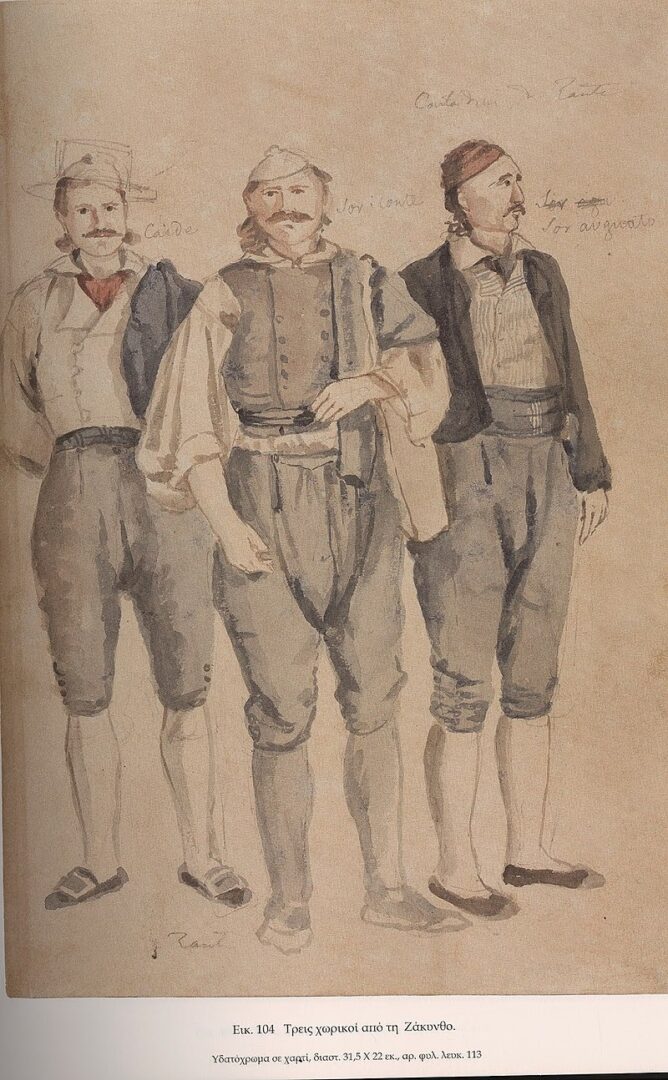
Plot to massacre the Nobles (1799)

Resistance continued to grow among the Cittadini, Popolari and some of the peasants to the reinstatement of the privileges of the Nobili, and even the reinstatement of a recreated Libro d’Oro so detested by the other classes of Zakynthos. Only the names prior to the arrival of the French were to be included. Much of the resistance coalesced around the figure of Antonios Martinengos. Although probably the richest man in Zakynthos, and from an old aristocratic family, he was refused inclusion in the recreated Libro d’Oro because he was deemed of illegitimate birth. His enormous wealth also generated resentment among the old Nobili. Consequently, he savagely turned against his own Nobili class. It is said he was capable of mobilising thousands of supporters the Cittadini, Popolari and peasant classes and across all areas of Zakynthos.
In a fit of fury, he started planning along with the rural leader and relative, Stelios Stravopodis, the massacre of the Nobili during one of their meetings in Zakynthos town with the Russian lieutenant in place of the absent Usakaov, Tisenhausen to elect the archons and local council of the island scheduled for 21 October 1799. According to Martinengos’s plan, crowds were expected to gather waiting his commands next to the building where the Nobili were planning to meet in St Mark’s Square. Within that crowd was an armed group under the leadership of Michael Tsintos or Kolelas. Another group under the order of Martinengos was going to set fire to the meeting place of the Nobili. In the chaos that would have eschewed, the armed group would enter the building and murder the Nobili.
As planned on the morning of 21 October 1799, a crowd started to gather around the meeting place of the Nobili waiting on Martinengos. The Nobili thought the crowd had gathered to await the election of the archons and local council. However, during the previous evening, Martinengos had changed his mind about the abominable crime he was planning and sent Stravopodis to the crowd and armed group to advise they cease their operations. Without the apparent of Martingenos the assembled crowd started to drift back to their homes. But Michael Tsintos and his group set fire to the building before the arrival of Stravopodis. A supporter of Martingengos, also regretting the plan to set fire to the building, advised the Nobili to flee. The Russian soldiers rapidly apprehended Michael Tsintos and several members of his group.
Michael Tsintos and his group were sentenced to death by the Russian occupying authorities. They decided to behead Michael Tsintos and placed his head in the square of Agios Nikolas tou Molou to set an example to the islanders. Other accomplices were savagely beaten by the Russian soldiers. Others were exiled and their property confiscated. Tiesenhausen then announced that the leaders of the plot, Martinengos and Stravopodis were to report to him within 24 hours. However, they had fled into the mountainous interior of the island.
Martinengos used his wealth to bribe many officials and so managed to free himself and Stravopodis from the accusation of being ringleaders of the planned massacre of the Nobili. Furthermore, using important intermediaries, he managed to ultimately gain the favour of Tisenghausen rather than his wrath. Despite protestations from some of the Nobili, a few months later Antonios Martinengos and Stelios Stavropodis even managed to be included in the recreated Libro d’Oro and consequently the local council.